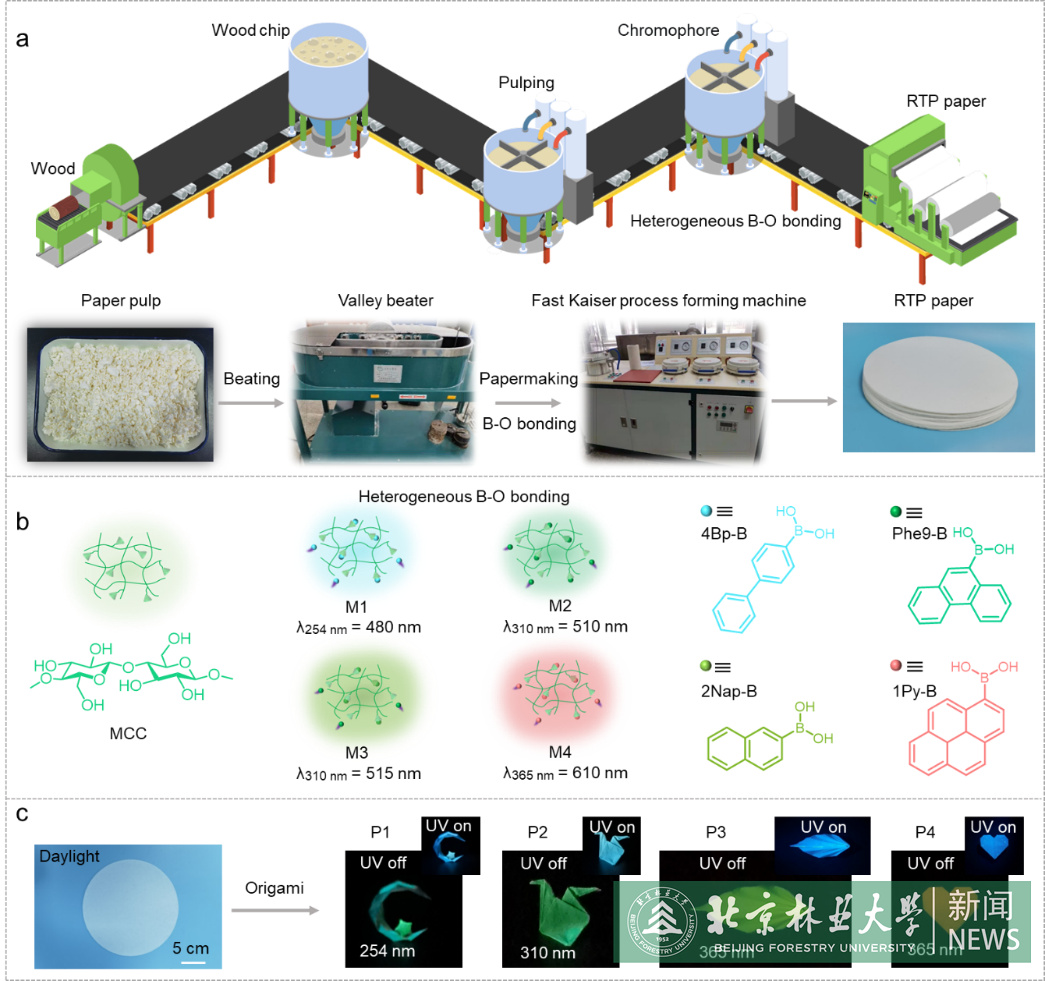Latest news
Recently, Professor Peng Feng's research group from the College of Materials Science and Technology has made new progress in cellulose-based room temperature phosphorescence materials. The research paper entitled "Large-scale preparation for multicolor stimulus-responsive room-temperature phosphorescence paper via cellulose heterogeneous reaction" was published in Advanced Materials (IF=29.4), a top journal in the field of materials.

The large-scale preparation of sustainable room-temperature phosphorescence (RTP) materials, particularly those with stimulus-response properties, is attractive but remains challenging. This study developed a facile heterogeneous B–O covalent bonding strategy to anchor arylboronic acid chromophores to cellulose chains using pure water as a solvent, resulting in multicolour RTP cellulose. The rigid environment provided by the B–O covalent bonds and hydrogen bonds promote the triplet population and suppress quenching, leading to an excellent lifetime of 1.42 s for the target RTP cellulose. By increasing the degree of chromophore conjugation, the afterglow colours could be tuned from blue to green and then to red. Motivated by this finding, a papermaking production line was built to convert paper pulp reacted with an arylboronic acid additive into multicolour RTP paper on a large scale. Furthermore, the RTP paper was sensitive to water because of the destruction of hydrogen bonds and the stimuli-response could be repeated in response to water/heat stimuli. The RTP paper can be folded into 3D afterglow origami handicrafts and anti-counterfeiting packing boxes or used for stimulus-responsive information encryption. This success paves the way for the development of large-scale, eco-friendly, and practical stimuli-responsive RTP materials.
Gao Qian, a doctoral student in the College of Materials Science and Technology, is the first author of the paper. Youth teacher Lv Baozhong and Professor Peng Feng are the co-corresponding authors. The Beijing Key Laboratory of Forest Biomass Chemistry of Beijing Forestry University is the signature unit of the first author.
This work was supported by the National Science Fund for Distinguished Young Scholars of China (32225034), Beijing Natural Science Foundation (6222044), China-111 Project (BP0820033), and Fundamental Research Funds for the Central Universities (BLX202131)
Paper links: https://doi.org/10.1002/adma.202305126










